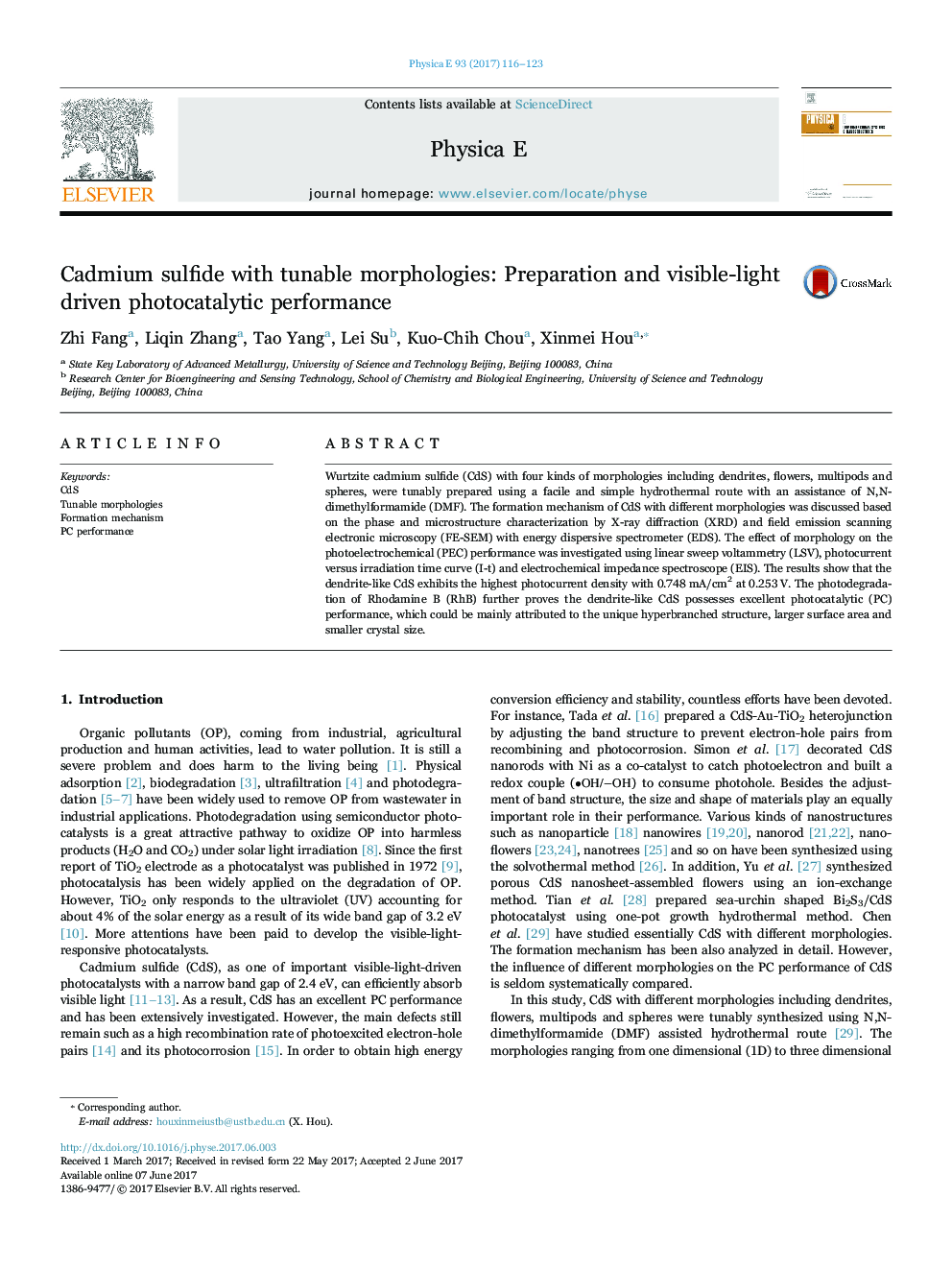| Article ID | Journal | Published Year | Pages | File Type |
|---|---|---|---|---|
| 5450004 | Physica E: Low-dimensional Systems and Nanostructures | 2017 | 8 Pages |
Abstract
Wurtzite cadmium sulfide (CdS) with four kinds of morphologies including dendrites, flowers, multipods and spheres, were tunably prepared using a facile and simple hydrothermal route with an assistance of N,N-dimethylformamide (DMF). The formation mechanism of CdS with different morphologies was discussed based on the phase and microstructure characterization by X-ray diffraction (XRD) and field emission scanning electronic microscopy (FE-SEM) with energy dispersive spectrometer (EDS). The effect of morphology on the photoelectrochemical (PEC) performance was investigated using linear sweep voltammetry (LSV), photocurrent versus irradiation time curve (I-t) and electrochemical impedance spectroscope (EIS). The results show that the dendrite-like CdS exhibits the highest photocurrent density with 0.748Â mA/cm2 at 0.253Â V. The photodegradation of Rhodamine B (RhB) further proves the dendrite-like CdS possesses excellent photocatalytic (PC) performance, which could be mainly attributed to the unique hyperbranched structure, larger surface area and smaller crystal size.
Keywords
Related Topics
Physical Sciences and Engineering
Materials Science
Electronic, Optical and Magnetic Materials
Authors
Zhi Fang, Liqin Zhang, Tao Yang, Lei Su, Kuo-Chih Chou, Xinmei Hou,
